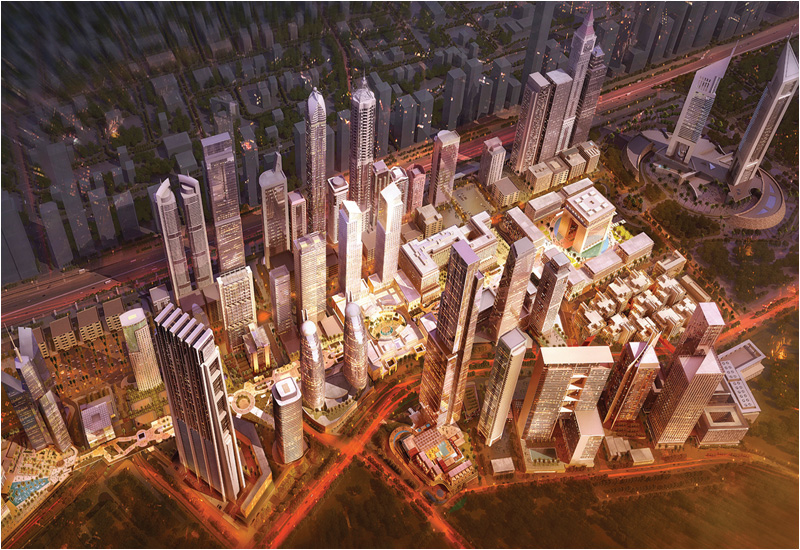Schafer reveals an increase in hospitality and housing projects in phase two. Ritz-Carlton is currently the only operational hotel, but work on the delayed Rosewood Dubai has recommenced, with opening scheduled for 2015. Two new smaller hotels are also planned, one a luxury boutique hotel and one possibly in the mid-market; a hotel is planned for an existing building, and there is provision for a further new hotel.
“We are excited because we think we are doing the first boutique hotel in Dubai, so that’s a niche,” says Schafer, referring to an AED250mn (US $68mn) new build on an empty lot between the Standard Chartered building and The Gate Village, for which a Gate Village office building was originally planned.
“We have boutique hotel operators…stampeding over each other to [get in] and what better location can you have than that,” says Schafer, highlighting the proximity to the Gate Village and its restaurants such as Zuma and Roberto’s.

| Advertisement |
“It’s 152 rooms to be exact. We expect to make an announcement within the next few months, with a view that when approved we’ll then launch the design,” says Schafer.
In line with DTCM’s initiative to encourage more three- and four-star development in Dubai — as part of its Tourism Vision 2020, which aims to attract 20 million visitors by 2020 — Schafer says he is “taking proposals for a four-star hotel at DIFC as well”.
“We may have one more hotel. We don’t want too many hotels. One of our plots has a potential residential tower, hotel tower and an office tower on one of them, so we may put in a hotel there but that’s aside from the four-star hotel that we’re looking at,” he clarifies.
There will also be new restaurants, with celebrity chef Greg Malouf scheduled to make his Dubai debut in September in the Al Fattan Currency House, as well as recent launches from Monaco’s Sass Café, Sweet Connections and The Steak Bar.
Meanwhile, arts and entertainment venues, are being developed with Sir Nicholas Kenyon, managing director of the Barbican in London.
Schafer reveals plans for cinema and live theatre, using Barbican as a “role model”. He comments: “If you look at all the financial districts in the world, the city of London is number one, and the Barbican is right in the heart of that.”
The remaining piece of the puzzle is the overall connectivity of DIFC, which is really what the masterplan is “all about”, says Schafer. He is keen to bring the ‘human element’ into the centre, creating a destination that attracts people seven-days-a-week.
“This is where we can make a USP, and the point of difference is the environment and places between the buildings, when people walk to the village, the restaurants and art shows; it’s a human scale, we’re adding to those amenities,” concludes Schafer.









 Search our database of more than 2,700 industry companies
Search our database of more than 2,700 industry companies









